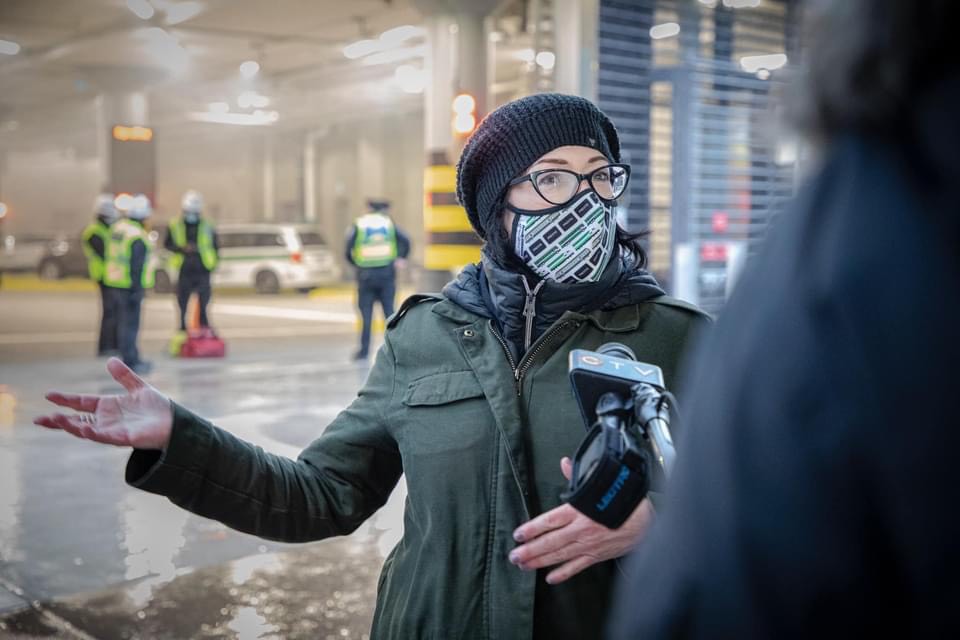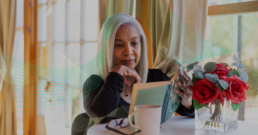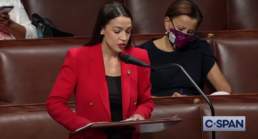Anne Marie Aikins faced news scrums for decades as the Chief Spokesperson for some of Ontario’s biggest agencies like the Toronto Public Library and Metrolinx. She handled tough questions from veteran reporters and built a solid “no spin” reputation.
I spoke with Anne Marie about the importance of media training. I learned about her career, and what has changed in the world of media relations.

Shannon Currie: You’ve been a media relations expert and spokesperson for more than thirty years. The Canadian Press called you a “media relations maven.” How did you get your start?
Anne Marie Aikins: It’s not straightforward. I wanted to be a doctor because my dad was a doctor. But I didn’t like the idea of staying in school for so long, so I decided to try nursing. I really loved the work, but I didn’t like the sexism that went along with it, especially at that time. I remember my instructors telling me I had to stand when a doctor entered the room and that I was never to question him under any circumstances. I thought that was ridiculous.
So, I left nursing in a hospital setting to do a combination of nursing, counselling, and giving physical care and emotional support to people with disabilities in the community. I had two sisters who lived with disabilities of various sorts, and, in a way, they guided me to that work. Our family was always struggling to find resources for them, so it led me to know all of the resources for people with disabilities.
But while I was doing that work, I was raped. That experience, combined with the justice system of thirty or so years ago — riddled with sexism and judgment — led me to form a volunteer group for survivors because there wasn’t anything in my small town at that point. Eventually, it became my full-time job. That was difficult, hard work, but it allowed me to become a spokesperson. I never felt ashamed of being raped, even though society was shaming me for it. I was defiant about it. So, I would speak to the media very naturally. I also realized I was a good writer and storyteller and liked journalism.
So I moved to Toronto with my young son, went back to school for journalism, and wrote some books that were published. Eventually, somebody asked me to help their agency because they needed someone who knew the media. So, that’s how I got into PR — not a linear process at all.

SC: No, not linear, and a very personal journey. So, thank you for trusting us with your story. You are a very open and candid kind of storyteller. Did you find that approach an asset to your work?
AMA: I built my reputation on that for many years. And I did go to several public agencies throughout my career, the longest being my last post as the Chief Spokesperson at Metrolinx.
All the public agencies I worked with provide services to the public, so they’re fraught with issues that will surprise you and those that are expected. And they all have customers that can be upset with you as often as every day. So, it demands a good storyteller who can connect with those customers. Whether through the media or the agency’s personal channels, you have to connect with them and use the same voice across all channels.
SC: How has the media landscape changed? And what does that mean for organizations wanting to work with the media?
AMA: When I first started, your vehicle to customers was primarily through the media and your own efforts. When social media arrived, the landscape of media and agencies changed completely. It put a greater demand on spokespeople.
The evolution of the last five years has been very dramatic as well because the media landscape itself has changed — and I don’t know what it will look like five years from now. That makes it difficult for organizations because they have to adjust. So, they need good people to advise them on how to navigate this media transformation. For example, if you rely only on traditional tools like media releases or conferences, they may not exist in five years.
“When social media arrived, the landscape of media and agencies changed completely. It put a greater demand on spokespeople.”
SC: We’re having this conversation on the heels of Corus Entertainment’s announcement to reduce its full-time workforce by 25%, about 800 jobs. Do you think organizations understand what’s going on with the media?
AMA: I don’t think a lot of people understand it completely; they just see it happening. So, I don’t think many organizations are planning for it. It’s getting harder to get media attention unless it’s bad news. So, I think it’s really important for organizations to understand the change and plan for it.
SC: So when advising clients, what do you say to the organization that thinks they’re too small or too “under the radar” for the media to care about what they’re doing? I mean, is that true?
AMA: Not at all! Because of the direction of our political discourse and the speed of social media and cancel culture, those components create an ecosystem where people care about everything. I’ve seen companies get into trouble and be really taken aback by what happened and the speed at which it happened. So, the way to help organizations understand their risk levels and reduce them proactively is through reputation management and media training.
SC: On the flip side, does training help organizations prepare to share their good news stories with the media?
AMA: Absolutely. Mainly, that work revolves around understanding how to tell your story in a way that immediately resonates with editors and journalists. Often, organizations are so personally involved in their story that they get lost in the forest for the trees. So it’s about helping them understand what makes a story newsworthy, building that story out, and then all the best practices that go into getting in front of the media.
SC: On one hand, we have a landscape of fewer traditional media outlets and, on the other hand, a sharp rise in social media and civic journalism. How do organizations need to be thinking about the media in 2024?
AMA: I used to think of myself as not just a spokesperson but as the Chief Ambassador. That was true when I was with the media or just talking to a customer because whatever you say could be filmed or transmitted to the media. So, organizations need to think of their spokespeople as ambassadors. So that’s why I prefer to have everyone trained up to be an ambassador — not that they’re all expected to go live on CP24 – but trained so they’re aware that everything they say to their customers is in some way connected to the media, and that they can have confidence in that reality.
SC: So, if I’m a communications director, how should I think about who gets prioritized for media training in the organization?
AMA: The priority would be anyone who speaks to the public in any capacity. Because the public is the media now — that’s a big change from previous times.
SC: So, if I’m a retailer, am I training my cashiers? If I’m a school, I’m training my teachers?
AMA: Absolutely. Because media training builds confidence. It helps staff understand their ambassador role. Not to make them afraid of everything they say or do but to understand how important what they say is to the company’s brand.
Training also helps your frontline people understand that they’re not a company spokesperson, so they know what they’re not responsible for communicating when put on the spot.
“Because media training builds confidence. It helps staff understand their ambassador role. Not to make them afraid of everything they say or do but to understand how important what they say is to the company’s brand.”
SC: What does success look like after media training?
AMA: I look for confidence, and that manifests in speed. So, if an organization has improved its timing to handle an issue faster, not letting something fester out in the public, that shows confidence. That’s always a sign of success for me.
SC: Our conversation started with your non-linear career path marked with battles against sexism. As a female spokesperson, did you ever feel you were up against the characterization of “the outspoken woman”?
AMA: Rarely to my face, but I have heard more than once over my career the “B word.” But I didn’t let that scare me. I could see in people’s faces who was listening to me and who was disregarding me. And it still happens today for women; you still have to speak up for yourself and pay attention to who is listening to you, who is talking over top of you, and who’s afraid of you — and not let that make you afraid. That’s a hard thing to do, especially for much younger women.
SC: How would you describe this time for women?
AMA: I think we’re in a more hopeful time for women. Because we’ve seen the bad things that can happen when we take our eye off the ball. For example, look at what’s happening in the US with women’s rights. I never thought we’d be here again — ever! These were long-fought battles.
But, once again, I think women are calling themselves “feminists.” It had gone out of fashion for a long time because the feeling was, ‘I’m just as equal to men, so I don’t have to distinguish myself.’ But I think more young women recognize equality isn’t a given and realize supporting other women is important. I love the efforts of women supporting women, especially when I see young women doing it — I just love it! So, that gives me a lot of hope.
To learn more about Anne Marie Aikins’ public relations, media training, and crisis communications consultancy services, contact us today.
Shannon Currie
Senior Consultant and Writer at Curious Public.


